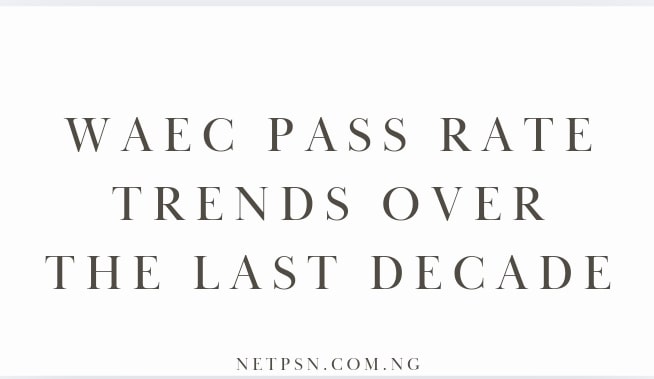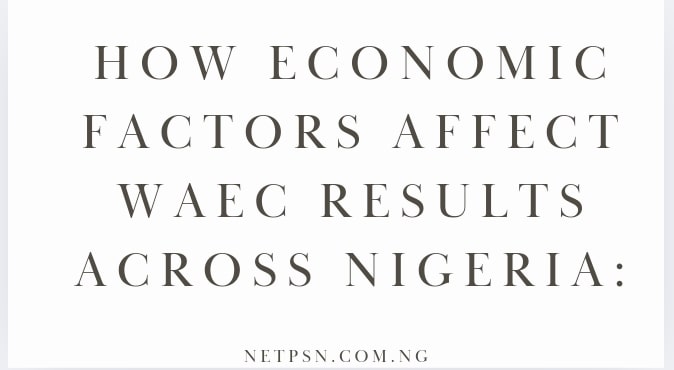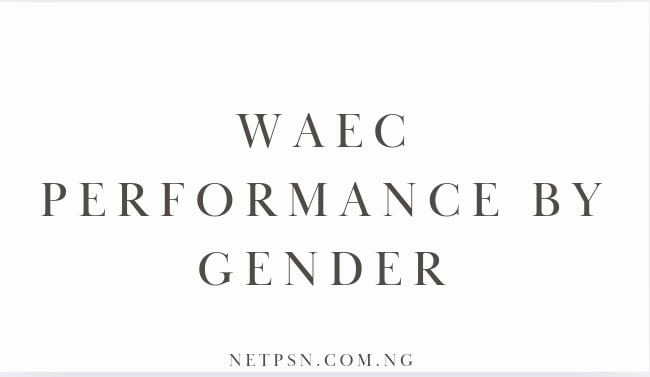Understanding the trends in the WAEC pass rates over the past decade provides valuable insights into educational performance across the region. This article will explore statistical data, highlight trends, and provide context to interpret these changes effectively.
2. WAEC Pass Rate Overview
2.1 Definition of Pass Rate
The WAEC pass rate is calculated as the percentage of students who achieve a minimum of five credits, including Mathematics and English. This is often the standard benchmark used to determine eligibility for higher education.
2.2 Data Collection Method
WAEC publishes its results annually, providing an overview of performance across member countries. This data is crucial for educational stakeholders to analyze the effectiveness of academic programs and policies.
3. WAEC Pass Rate Trends (2014–2023)
This section delves into the WAEC pass rates for the last ten years, noting any significant changes in educational performance among WAEC candidates.
3.1 2014 – 2016: Initial Fluctuations
From 2014 to 2016, WAEC pass rates displayed considerable fluctuation due to various factors, such as educational policies, funding for schools, and teacher quality improvements.
| Year | Pass Rate (Percentage) |
|---|---|
| 2014 | 31.28% |
| 2015 | 38.68% |
| 2016 | 52.97% |
In 2014, only 31.28% of students achieved the minimum five credits, a significant dip linked to challenges such as inadequate resources in rural schools. However, by 2016, the pass rate rose to 52.97%, reflecting some educational reforms implemented during this period.
3.2 2017 – 2019: Gradual Improvement
Between 2017 and 2019, there was a steady improvement in WAEC pass rates, with countries like Nigeria and Ghana implementing policies to improve educational access and quality.
| Year | Pass Rate (Percentage) |
|---|---|
| 2017 | 59.22% |
| 2018 | 64.34% |
| 2019 | 65.24% |
This increase can be attributed to improved teacher training programs and investment in educational infrastructure, which helped students better prepare for exams.
4. Factors Influencing WAEC Pass Rate Trends
4.1 Educational Policy and Funding
Government policies, such as funding for educational materials and teacher recruitment, have significantly impacted WAEC pass rates. Countries that invested more in education generally saw higher pass rates.
4.2 Access to Learning Resources
Regions with better access to textbooks, laboratories, and internet facilities performed better overall. As more schools in urban areas have access to these resources, there’s often a disparity in pass rates between urban and rural schools.
4.3 Socio-Economic Factors
The socio-economic background of students also influences WAEC performance. Students from low-income families often lack access to tutoring and other educational aids, which impacts their exam preparedness.
5. Statistical Analysis of WAEC Pass Rates by Country
5.1 Nigeria
In Nigeria, the pass rates have shown improvement from 31.28% in 2014 to 65.24% in 2019, before stabilizing around 70% in 2023.
5.2 Ghana
Ghana has consistently maintained higher pass rates compared to other countries, with an average pass rate of around 70% over the last decade, largely due to strong government support for secondary education.
6. WAEC Pass Rates by Subject
WAEC rates also vary significantly by subject, with subjects like Mathematics and English often recording lower pass rates than subjects like Biology and Social Studies.
| Subject | Average Pass Rate (2014-2023) |
|---|---|
| English | 55.6% |
| Mathematics | 48.9% |
| Biology | 72.1% |
| Social Studies | 68.7% |
The lower pass rates in Mathematics and English underscore the need for targeted interventions in these subjects.
7. Impact of COVID-19 on WAEC Pass Rates
The COVID-19 pandemic in 2020 disrupted academic schedules across West Africa, with schools shutting down for extended periods. WAEC rescheduled its exams, and the 2020 pass rate witnessed a slight dip, reflecting the challenges of remote learning.
| Year | Pass Rate (Percentage) |
|---|---|
| 2020 | 61.5% |
| 2021 | 65.0% |
8. Key Insights from WAEC Pass Rate Data
8.1 Gradual Improvement Post-COVID
Since 2021, WAEC pass rates have shown recovery, with an increase in the adoption of digital resources and the normalization of academic schedules.
8.2 The Need for Rural Educational Support
The disparity in pass rates between urban and rural areas highlights the importance of making quality education accessible in rural regions.
9. Conclusion
Over the last decade, WAEC pass rates have seen a gradual improvement, driven by educational reforms, increased access to learning resources, and better exam preparation strategies. However, challenges remain, particularly in rural areas and in core subjects such as Mathematics and English.
Also Read: WAEC Performance by Gender: Gender Statistics Analyzing Male and Female Student
FAQs
Q1: Why are WAEC pass rates lower in rural areas?
A: Rural areas often have less access to resources, experienced teachers, and educational infrastructure, which impacts student performance.
Q2: How did COVID-19 affect WAEC pass rates?
A: The pandemic disrupted academic schedules, leading to a slight dip in pass rates in 2020 as students faced challenges with remote learning.
Q3: What are some of the core factors influencing WAEC pass rates?
A: Factors include government educational policies, socio-economic conditions, and access to learning resources.
References:
- WAEC. “Statistical Overview of WAEC Performance.”
- UNESCO. “Education Access and Policy in West Africa.”
- Nigerian Ministry of Education



















+ There are no comments
Add yours